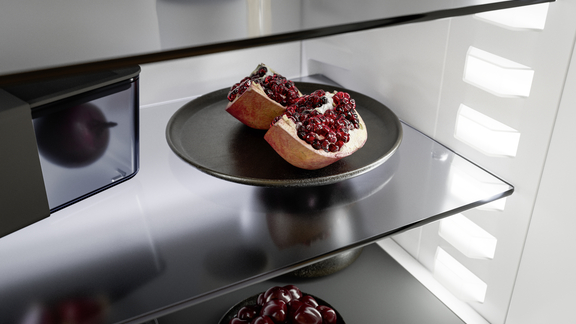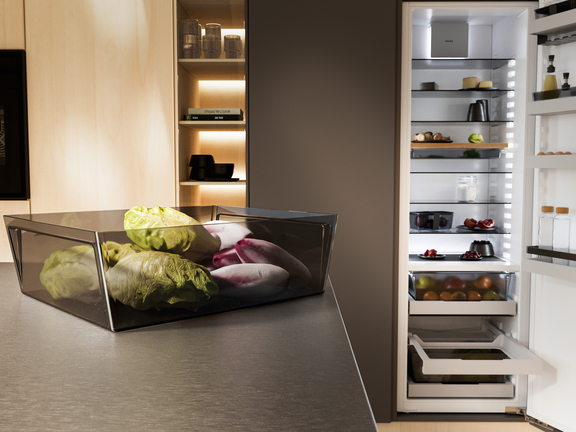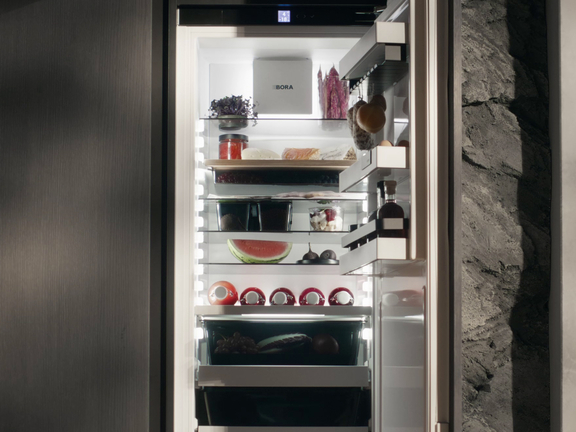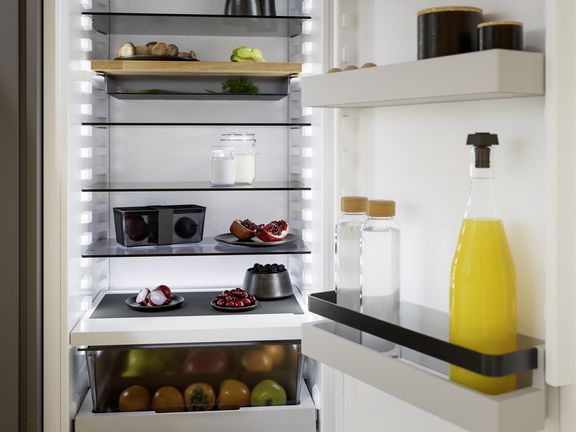

Everything fresh?
Fruit and vegetables, fish and meat, dry goods such as pasta and rice - different foods have different requirements when it comes to food storage. If you maintain the optimum storage temperature and keep the products in the ideal place, you can look forward to long-lasting freshness - and not only that. Storing food correctly in the fridge and pantry also avoids waste, protects the environment and your wallet. What is important here, which foods should you not store in the fridge and which are essential? We reveal clever tips for food storage.
The week's shopping is done, now it's time to stow away the supplies. Many foods have special requirements in terms of storage temperature or lighting conditions. Some should be placed in the fridge as soon as possible so as not to interrupt the cold chain, while others prefer it warm. These are the basics of safe food storage:

The use-by date tells you until when you should consume the food. This information is mandatory for perishable goods such as fresh meat. It should be observed, otherwise there is a risk to health. By contrast, the best-before date guarantees the manufacturer specific product characteristics such as flavour, aroma and consistency. This does not mean that the food is no longer edible after this date. Many products can be enjoyed without hesitation even after the deadline. Here you have to rely on your own senses and do the smell and taste test.
Last but not least, temperature plays an important role in optimising food storage. Classic refrigerators with static cooling have different temperature zones . It is cooler in the lower part than further up and in the door compartments. Modern variants are often equipped with recirculating air cooling, also known as dynamic cooling. If this is the case, a fan distributes the air evenly throughout the interior. Significant temperature differences are no longer noticeable, with the exception of the door area and the vegetable compartments. Tip: Read more about keeping food in the fridge.

Nevertheless, refrigerators with convection cooling also offer different temperature ranges. Depending on the model, there are zero-degree zones, for example, and the desired temperature can often be individually regulated throughout the interior.
The question arises as to the optimum temperature for food storage in the refrigerator. Experts recommend an interior temperature of around 5 - 8 °C for appliances with dynamic cooling. In the refrigerator with static cooling, you can use the different zones to optimise food storage:
A well-stocked pantry is practical: You always have food in the house for delicious dishes. To keep your reserves fresh until you use them up, we have something for you: These tips will help you store your food successfully.

Cool and dry: these conditions are ideal for most foods. The exceptions are fruit and vegetables, which stay crisp at a higher humidity. Meat and fish must always be refrigerated.
Food can be stored in the fridge and freezer, as well as the kitchen cupboard or larder. It is best to chill fresh goods and the freezer will enable you to keep them for longer. Everything that needs a dry, cool, dark environment is best kept in a cupboard or the larder.
A glance at the packaging will normally tell you how to correctly store the product. ‘Keep refrigerated’ refers to storage in the refrigerator at 0–8 °C, whereas ‘store in a cool place’ refers to a place outside the refrigerator at a maximum of 18 °C.
Perishable foods like fresh meat and fish are best kept right at the bottom of the refrigerator. That is where the lowest temperatures are.
In the vegetable drawer or on the shelf just above it.
Sausages and cheese are best kept at the bottom of the refrigerator.
The humidity is higher in the vegetable drawer and it is very cool. This keeps fresh goods like lettuce crisp for longer.